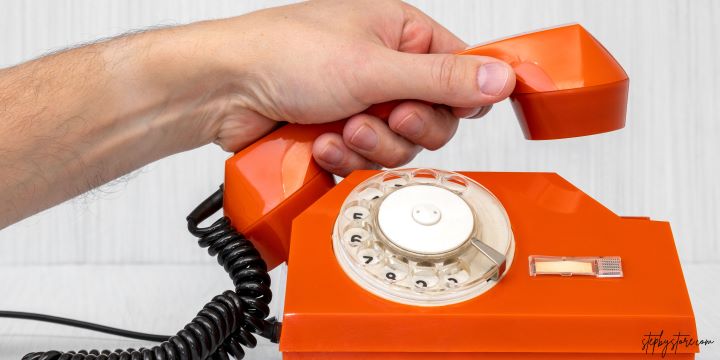The Lifeline Assistance Program ensures all Americans can access telecommunications services. It’s a significant decision that requires careful consideration and an understanding of the step-by-step process to ensure a seamless switch. Here, we guide you through the maze of changing your Lifeline service provider, simplifying each procedure component so you can confidently make an informed choice.
Understanding Lifeline Services
The Lifeline program, instituted by the Federal Communications Commission (FCC), is a government assistance initiative that makes communication services more affordable for low-income consumers. The services range from telephone to broadband internet, aiming to connect individuals with job opportunities, healthcare, and emergency services. To be eligible for Lifeline support, applicants must demonstrate their eligibility through proof of income or participation in federal assistance programs like Medicaid or SNAP. Understanding these parameters is foundational to making the most of the program and facilitates a smoother transition when electing to change providers. However, it’s not uncommon for beneficiaries to encounter the need to switch Lifeline providers, whether for better service, enhanced features, or more favorable pricing.
The Need for Change
Lifeline users might contemplate switching providers for various reasons that resonate with their changing circumstances. Common motivators include improved customer service, expanded network coverage, and upgraded technology offerings. At times, changes in a user’s financial status dictate a need for more cost-effective solutions, while at other times, enhanced service features become the game-changer. The need for modification isn’t solely based on dissatisfaction but can also be a strategic choice to tailor services more closely to the user’s lifestyle and communication requirements.
Preparation for Transition
Preparations for the change should begin with carefully evaluating potential new providers and comparing their plans, coverage, and customer reviews. During this phase, it’s wise to assess your current usage and anticipate future needs – more data, minutes, or particular network capabilities. Compile the necessary documents, including identification and income verification, to expedite the process once you decide to leap the new provider. This upfront diligence will prevent potential delays or complications with your application for a new Lifeline service.
Initiating the Switch
The first concrete step is to reach out to the new desired provider and express your intention to switch services under Lifeline. Engage with their customer support to understand the nuances of their service packages and the transition process. Simultaneously, it is often advisable to notify your current provider of your plan to ensure they do not unknowingly continue service—and billing—under the assumption of your stay. Effective service transfer typically requires a delicate balance of communication and coordination between the consumer and providers.
Rights and Regulations
With rights come regulations, and being well-versed in both is central to navigating the Lifeline program. With knowledge about the FCC’s rules, you can confidently approach the switch. The FCC’s National Verifier is a critical tool in this respect, serving as a centralized system to verify consumer eligibility and facilitate provider changes. Consumers have the indisputable right to change their Lifeline provider at any point. Familiarizing yourself with resources like the FCC’s guidelines on Lifeline transfers clarifies the transition sequence and safeguards consumer interests.
Avoiding Pitfalls
A provider change could bring about potential service interruption or confusion if not executed properly. To mitigate these risks, keep open lines of communication with both providers and follow up on each phase of the transfer. Beware of the existence of fraudulent entities; always verify the legitimacy of any contact claiming to represent Lifeline services. Such careful oversight and caution ensure your switch between Lifeline services is completed without surprises.
Post-Switch Checklist
Once you’ve navigated the process and your new service is activated, there are a few things to tick off your post-switch checklist. Verify that all desired services are active and functioning correctly. Scrutinize the first bill from your new provider to confirm it reflects what was agreed upon. Ensure any personal information stored with the old provider is transferred securely or destroyed. By working through this checklist, you reinforce the security and efficacy of your service transition.
Tech Tips for Smooth Transition
Technology plays a central role in today’s communication, so handling the tech aspects of a provider switch with care is essential. Should new devices be part of the changeover, familiarize yourself with the setup and operation well before the switch is in effect. Secure the transfer of contacts, photos, and other critical data, and make the necessary adjustments to settings for messaging, voicemail, and network preferences. These preemptive steps forestall technical glitches and ensure you can use your new Lifeline services immediately.
Additional Resources and Support
Support continues beyond doesn’t the provider; a wealth of resources is available for continuous guidance. For a start, tap into the collective wisdom of virtual communities, social forums, and platforms where individuals share experiences and solutions. Staying current with the Lifeline program is also simplified with access to information sources such as the ACP and Lifeline support news, which compile updates, changes, and news relevant to subscribers.
Future-Proofing Your Lifeline Service
With a visionary eye towards the future, anticipate the evolution of communication technology and policy changes. Choosing providers that adapt promptly to regulatory shifts and embrace emerging technologies ensures that your Lifeline service remains relevant and valuable. This forward-thinking approach empowers you to leverage the Lifeline program for durable connectivity and continued access to the digital world.
In conclusion, while the thought of changing phone providers under Lifeline might initially seem burdensome, it can mark the start of a more attuned communication experience. Treated as an opportunity for upgrade and enhancement rather than a hurdle, switching Lifeline providers might be the step forward you need. With the proper preparation and the treasure trove of information, you are fully equipped to navigate this journey with ease and assurance.



